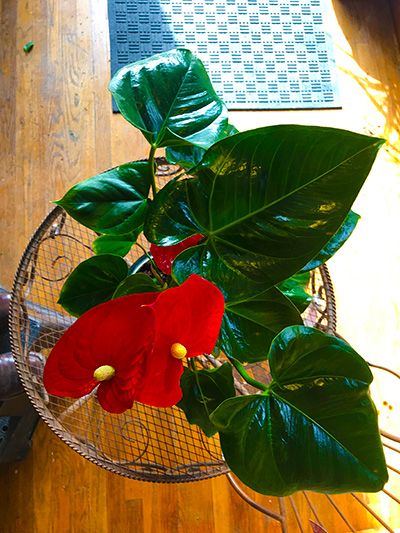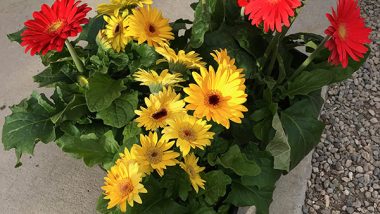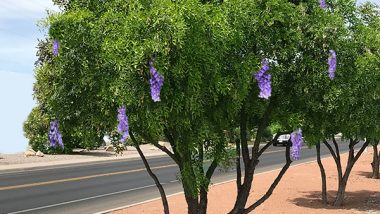Last updated on January 2nd, 2026 at 03:02 pm
Anthurium indoor plants (Anthurium andraeanum). These plants are grown and used as indoor plants decor all around the world. They are considered tropical plants and will freeze if planted outdoors where temperatures get below 32°. They come in showy reds, pinks, lavender, whites, and green blooms.
Anthurium plants have large, glossy leaves with a waxy texture that stands out. They’re also known as tailflowers or flamingo plants due to their unique, colorful blooms that resemble a flamingo’s bright feathers or a long, curved tail. These plants are popular for their striking appearance and are often used to add a tropical vibe indoors or in gardens.
How to Care for Anthurium Plants
They like moist organic-rich soils. Anthurium plants like lower light settings won’t do as well in front of a large window with lots of light shining through. Place them further back in the room or where the sun does not reflect off their shiny foliage.
If you travel a lot you will see these plants will be placed indoors in hotel lobbies, restaurants, and outdoor landscape areas where there are no freezing temperatures during the winter months.
Too much sun exposure can result in the burning or browning of the leaves. Regularly cut away dead or wilting leaves to redirect the plant’s energy toward healthy, new growth. Removing dying foliage prevents the plant from wasting resources and keeps it looking fresh.
Water about every twice per week, be sure to let the soil dry out in-between waterings…but never let it dry completely.
It is best to fertilize with a good all-purpose fertilizer and apply it about 1/2 the recommended ratio. Anthurium plants like lots of nitrogen and phosphorus for green leaves and healthy stems. Too much water, and like many indoor plants, can result in root rot. Yes, they like moist soil but not soggy. Make sure your plant drains well throughout the growing seasons. Typically, from mid-March until about late October.
The lavender-colored Anthurium

Problems with Anthurium Plants
The sap of the Anthurium plants can cause harm to dogs. They can irritate and cause swelling in the throat area of all dogs. Read more about this good-looking indoor plant on Wikipedia.
Mealybugs, aphids, and scale are common problems with these plants. Spray with a good insecticide to kill these insects. You can go organic and use insecticidal soaps or neem oil.
Using organic insecticides as opposed to harsh chemicals is what most gardeners are now doing. Why? Although organic insecticides are safer than harsh synthetic chemicals, they still should be used correctly.
- Read the label on all insecticides – organic or synthetic.
- There is a caution label on these products.
- They should be followed accordingly.
How to use insecticidal Soaps. More houseplant information right here.
Anthurium indoor plants


Greenhouse Manager, Master Gardener, and Webmaster.
If you have any questions or enjoyed this post, feel free to share your thoughts in the comments below.




